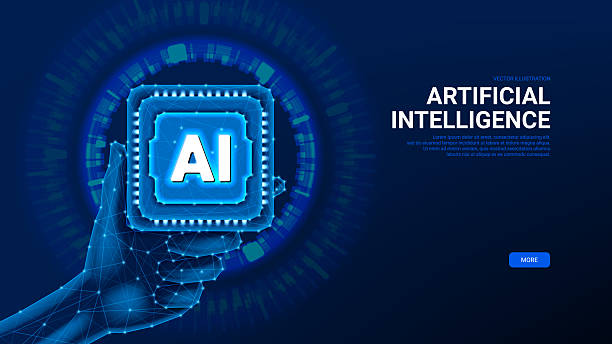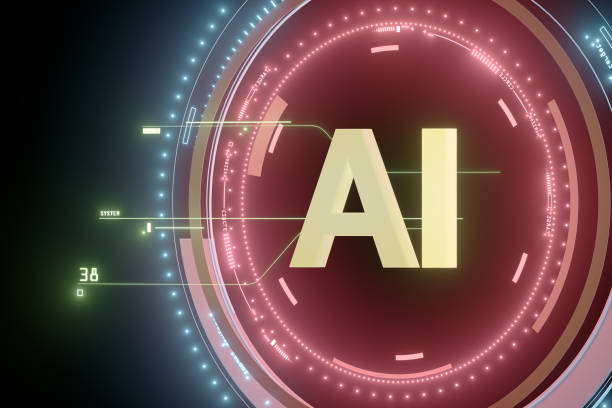What is Artificial Intelligence? Definition, History, and Key Concepts
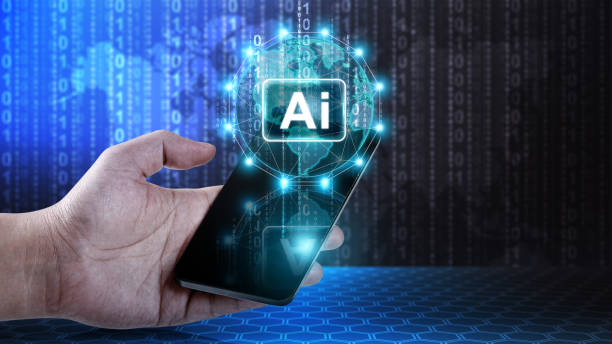
#Artificial_Intelligence (AI) is a branch of computer science that deals with building machines that can perform tasks that usually require human intelligence.
These tasks include learning, reasoning, problem-solving, perception, and understanding natural language.
Artificial Intelligence [Wikipedia](https://fa.wikipedia.org/wiki/%D9%87%D9%88%D8%B4_%D9%85%D8%B5%D9%86%D9%88%D8%B9%DB%8C) is a broad concept that encompasses various techniques and approaches.
From simple systems that follow pre-defined rules to complex neural networks that are capable of learning from data.
The history of artificial intelligence dates back to the 1950s, when researchers began exploring the possibility of building machines that could think.
Over the decades, significant advances have been made in this field, and artificial intelligence [IBM](https://www.ibm.com/topics/artificial-intelligence) is present in many aspects of our lives today, including self-driving cars, virtual assistants, and facial recognition systems.
Key concepts in artificial intelligence [MIT](https://news.mit.edu/topic/artificial-intelligence) include machine learning, deep learning, natural language processing, computer vision, and robotics.
Machine Learning: Algorithms that allow computers to learn from data without explicit programming.
Deep Learning: A type of machine learning that uses neural networks with multiple layers to analyze data.
Natural Language Processing: The ability of computers to understand and process human language.
Computer Vision: The ability of computers to see and interpret images.
Are you tired of losing business opportunities due to not having a professional corporate website? Worry no more! With Rasaweb’s corporate website design services:
✅ Your brand’s credibility and professionalism will increase.
✅ You will attract more customers and sales leads.
⚡ Get a free consultation to get started now!
Types of Artificial Intelligence from Expert Systems to Deep Learning

Artificial intelligence [Stanford](https://ai.stanford.edu/) can be divided into different types, including expert systems, machine learning, and deep learning.
Expert systems are systems that incorporate specialized knowledge in a specific field and can use this knowledge to solve problems.
Machine learning is a data-driven approach that allows computers to learn from data without explicit programming.
Machine learning algorithms can identify patterns in data and use these patterns to make predictions or decisions.
Deep learning is a type of machine learning that uses neural networks with multiple layers to analyze data.
Deep neural networks can learn complex patterns in data and perform very well in tasks such as image recognition and natural language processing.
Each of these types of artificial intelligence has its own specific applications and benefits, and depending on the type of problem, one type of artificial intelligence may be more appropriate than another.
Main Types of Artificial Intelligence
- Narrow AI: Specialized for a specific task.
- General AI: The ability to perform any intellectual task that a human can.
- Super AI: Intelligence that surpasses human intelligence.
Applications of Artificial Intelligence in Industry, Medicine, and Everyday Life
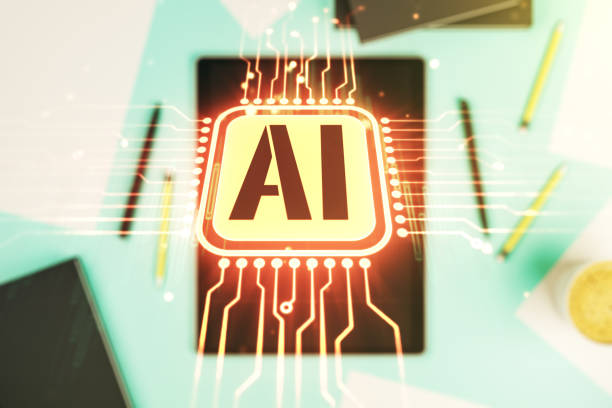
Artificial intelligence [Google AI](https://ai.google/) is used in many industries and fields.
In industry, artificial intelligence is used to automate processes, improve product quality, and reduce costs.
For example, industrial robots equipped with artificial intelligence can perform repetitive and dangerous tasks with greater accuracy and speed.
In medicine, artificial intelligence is used to diagnose diseases, develop drugs, and provide personalized care.
Image recognition systems equipped with artificial intelligence can analyze medical images and detect signs of disease.
In everyday life, artificial intelligence is used in virtual assistants, self-driving cars, recommender systems, and many other applications.
Virtual assistants such as Siri and Alexa can answer user questions and perform various tasks.
Below is a table of various applications of artificial intelligence in different industries:
| Industry | Application |
|---|---|
| Manufacturing | Automation, Quality Control, Failure Prediction |
| Medicine | Disease Diagnosis, Drug Development, Personalized Care |
| Finance | Fraud Detection, Risk Management, Financial Advice |
| Transportation | Self-Driving Cars, Traffic Management, Route Optimization |
Advantages and Disadvantages of Artificial Intelligence Opportunities and Challenges

Artificial intelligence [Microsoft AI](https://www.microsoft.com/en-us/ai) has numerous advantages and disadvantages.
The advantages of artificial intelligence include increased productivity, reduced costs, improved accuracy, and better service delivery.
Artificial intelligence can automate complex processes and help humans focus on more important tasks.
However, artificial intelligence also comes with challenges.
These challenges include job losses, biases in data, and ethical issues related to privacy and security.
These challenges need to be taken seriously and solutions need to be provided to address them.
The development and use of artificial intelligence should be done taking into account ethical and social issues to prevent serious problems.
Also, training and preparing the workforce for new jobs created by artificial intelligence is essential.
Key Advantages:
- Increased speed and accuracy in performing tasks
- Reduction of human errors
- Improved decision-making based on data
Key Disadvantages:
- High implementation costs
- Ethical and privacy concerns
- Potential for job losses
Doesn’t your current corporate website reflect the credibility and power of your brand as it should? Rasaweb solves this challenge for you with professional corporate website design.
✅ Increased credibility and trust from visitors
✅ Targeted attraction of more customers
⚡ Click to get a free consultation!
The Future of Artificial Intelligence Trends and Predictions

The future of artificial intelligence [DeepMind](https://deepmind.google/) looks very bright.
It is expected that artificial intelligence will play a more important role in our lives in the coming years and will transform many industries and fields.
Some of the key trends in artificial intelligence include the development of more advanced deep learning algorithms, increasing computer processing power, and expanding the use of artificial intelligence in Internet of Things (IoT) devices.
It is predicted that in the near future, artificial intelligence will be able to perform more complex tasks and make significant advances in areas such as self-driving cars, personalized medicine, and intelligent manufacturing.
However, it is necessary to seriously address the ethical and social issues related to artificial intelligence to prevent serious problems.
The development and use of artificial intelligence should be done considering the public interest and human values.
Important Trends in the Future of Artificial Intelligence:
- Explainable AI: Clarifying the decision-making process of artificial intelligence.
- Responsible AI: Developing and using artificial intelligence with consideration of ethical and social issues.
- Edge AI: Processing data on devices without the need for an internet connection.
Machine Learning vs. Deep Learning Differences and Similarities

Machine learning and deep learning are both subsets of artificial intelligence [OpenAI](https://openai.com/), but there are key differences between the two.
Machine learning includes a wide range of algorithms that allow computers to learn from data without explicit programming.
In contrast, deep learning is a type of machine learning that uses neural networks with multiple layers to analyze data.
Deep neural networks can learn complex patterns in data and perform very well in tasks such as image recognition and natural language processing.
One of the main differences between machine learning and deep learning is that deep learning requires much more data than machine learning to train well.
Also, deep learning usually requires more processing power than machine learning.
However, deep learning can perform better in tasks where there are complex patterns in the data.
Comparison of Machine Learning and Deep Learning:
| Feature | Machine Learning | Deep Learning |
|---|---|---|
| Data Requirement | Less | More |
| Processing Power Requirement | Less | More |
| Pattern Complexity | Simpler | More Complex |
| Applications | Broader | Image Recognition, Natural Language Processing |
Natural Language Processing Understanding and Generating Human Language
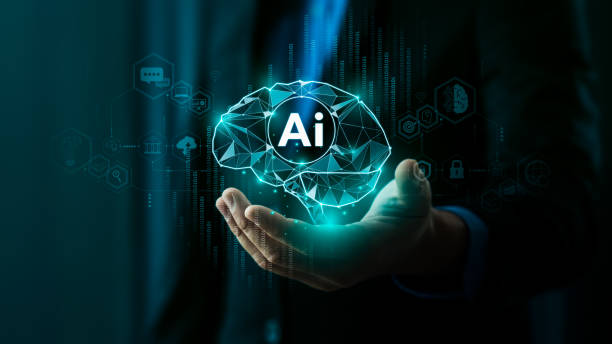
Natural Language Processing (NLP) [NLP](https://en.wikipedia.org/wiki/Natural_language_processing) is a branch of artificial intelligence that deals with the ability of computers to understand and process human language.
Natural language processing has wide applications, including machine translation, speech recognition, sentiment analysis, and question answering.
Natural language processing systems can analyze texts and extract important information, answer user questions, and even generate new texts.
One of the main challenges in natural language processing is the complexity and ambiguity of human language.
Human language has complex grammatical rules, and words can have different meanings.
Natural language processing systems must be able to understand these complexities and interpret them correctly.
With recent advances in deep learning, natural language processing systems have performed very well in many tasks and are currently used in many applications.
Key Applications of Natural Language Processing:
- Machine Translation
- Speech Recognition
- Sentiment Analysis
- Question Answering
Computer Vision The Ability to See and Interpret Images

Computer Vision [Computer Vision](https://en.wikipedia.org/wiki/Computer_vision) is a branch of artificial intelligence that deals with the ability of computers to see and interpret images.
Computer vision has wide applications, including face recognition, object recognition, medical image analysis, and self-driving cars.
Computer vision systems can analyze images and identify objects and patterns in them.
One of the main challenges in computer vision is the high diversity of images and changes in lighting and angles.
Computer vision systems must be able to tolerate these changes and interpret images correctly.
With recent advances in deep learning, computer vision systems have performed very well in many tasks and are currently used in many applications.
One of the most important applications of computer vision is in security and surveillance systems, which can automatically identify faces and detect suspicious activities.
| Feature | Description |
|---|---|
| Face Recognition | Identifying and verifying the identity of individuals based on facial features. |
| Object Recognition | Identifying and labeling objects in images. |
| Medical Image Analysis | Diagnosing diseases and abnormalities in medical images. |
| Self-Driving Cars | Understanding the surrounding environment and making decisions about the car’s path and speed. |
Does your current corporate website present a worthy image of your brand and attract new customers?
If not, turn this challenge into an opportunity with Rasaweb’s professional corporate website design services.
✅ Significantly improves the credibility and image of your brand.
✅ Smoothes the path to attract leads and new customers for you.
⚡ Contact Rasaweb now for a free and specialized consultation!
Ethical Issues in Artificial Intelligence Privacy, Bias, and Responsibility
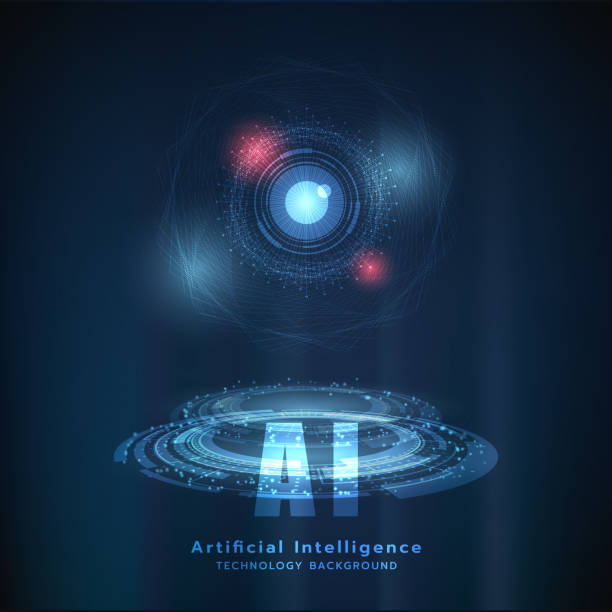
The use of artificial intelligence [Ethics of AI](https://en.wikipedia.org/wiki/Ethics_of_artificial_intelligence) raises important ethical issues, including privacy, bias, and responsibility.
Artificial intelligence systems often require a lot of personal data for training and decision-making, which can lead to privacy breaches.
Also, if the training data of artificial intelligence systems is biased, these biases can be reflected in the decisions of the systems and lead to discrimination.
The issue of responsibility is also one of the important issues in artificial intelligence.
If an artificial intelligence system makes a wrong decision and causes damage, who is responsible? Answering these questions requires careful consideration and the development of appropriate laws and regulations.
The development and use of artificial intelligence should be done with consideration of ethical issues to prevent serious problems.
Also, it is necessary to increase the transparency and explainability of artificial intelligence systems so that their performance can be properly evaluated.
The most important ethical issues in artificial intelligence:
- Privacy and data protection
- Preventing bias in decision-making
- Determining responsibility in case of error
How to Learn Artificial Intelligence Resources, Courses, and Learning Paths

Learning artificial intelligence [AI Learning](https://www.coursera.org/courses?query=artificial%20intelligence) can be an exciting and rewarding career path.
There are many resources and training courses for learning artificial intelligence, including online courses, books, articles, and workshops.
To start learning artificial intelligence, you can get acquainted with basic concepts such as machine learning, deep learning, and natural language processing.
Then you can go on to learn the tools and programming languages used in artificial intelligence, such as Python and TensorFlow.
Also, participating in practical projects and working with real data can help you strengthen your skills in artificial intelligence.
There are different learning paths for artificial intelligence, depending on your interests and career goals, you can choose a suitable path.
Some of the learning paths include machine learning, computer vision, natural language processing, and robotics.
With effort and perseverance, you can become an expert in the field of artificial intelligence and participate in innovative and impactful projects.
Top Artificial Intelligence Learning Resources:
- Coursera
- edX
- Udacity
- Khan Academy
FAQ
| Question | Answer |
|---|---|
| 1. What is Artificial Intelligence (AI)? | It is a branch of computer science that aims to create machines capable of simulating human intelligence and performing tasks that require human thinking, such as learning, problem-solving, and decision-making. |
| 2. What are the main types of Artificial Intelligence? | They can be classified into Narrow AI, which focuses on a specific task, General AI, which possesses comprehensive human capabilities, and Super AI, which surpasses human intelligence. |
| 3. Mention some common applications of Artificial Intelligence in our daily lives. | They include voice assistants (such as Siri and Alexa), recommendation systems (such as Netflix and Amazon), self-driving cars, facial recognition systems, and spam filters. |
| 4. What is the difference between Artificial Intelligence and Machine Learning? | Artificial Intelligence is the broader concept of creating intelligent machines, while Machine Learning is a subset of Artificial Intelligence that focuses on enabling systems to learn from data without explicit programming. |
| 5. What is Deep Learning? | It is a subset of Machine Learning that uses multi-layered artificial neural networks (deep neural networks) to process data and discover complex patterns, and it is used in image and speech recognition. |
| 6. What are the most prominent benefits of Artificial Intelligence? | Improving efficiency and productivity, automating repetitive tasks, making better decisions based on big data analysis, and developing solutions to complex problems in fields such as medicine and science. |
| 7. What are the main challenges facing the development and deployment of Artificial Intelligence? | They include the need for massive amounts of high-quality data, privacy and security issues, bias in data and algorithms, and high development and maintenance costs. |
| 8. Does Artificial Intelligence raise ethical or social concerns? | Yes, it raises concerns related to privacy, algorithmic bias, job loss due to automation, and responsibility for errors committed by intelligent systems, and the need for a regulatory framework. |
| 9. How can Artificial Intelligence affect the future of the labor market? | It can lead to the automation of some routine jobs, but it will also create new jobs that require advanced skills in the development, operation, and maintenance of Artificial Intelligence systems. |
| 10. What are some modern or promising technologies in the field of Artificial Intelligence? | They include advanced Natural Language Processing (NLP) (such as large language models like ChatGPT), Computer Vision, Robotics, and Generative AI. |
And other services of Rasa Web Advertising Agency in the field of advertising
Intelligent advertising campaign: An effective tool to engage users by optimizing key pages.
Intelligent Google Ads: Transform campaign management with the help of SEO-driven content strategy.
Intelligent digital advertising: A combination of creativity and technology to increase click-through rates by managing Google ads.
Intelligent custom software: A new service to increase SEO ranking improvement through SEO-driven content strategy.
Intelligent advertising campaign: A new service to increase customer acquisition through marketing automation.
And more than hundreds of other services in the field of internet advertising, advertising consulting and organizational solutions
Internet Advertising | Advertising Strategy | Advertorial
Resources
The future of artificial intelligence: Key trends and predictions
,What is Artificial Intelligence and How Does It Work?
,Will humans be destroyed by artificial intelligence?
,What is artificial intelligence and what are its applications?
? If you are looking to improve your business’s position in the online space, Rasa Web Digital Marketing Agency, with its expertise in Corporate Website Design and providing comprehensive digital marketing solutions, is ready to help you on your way to achieving your goals.
📍 Tehran, Mirdamad Street, next to Central Bank, South Kazerun Alley, Ramin Alley No. 6

